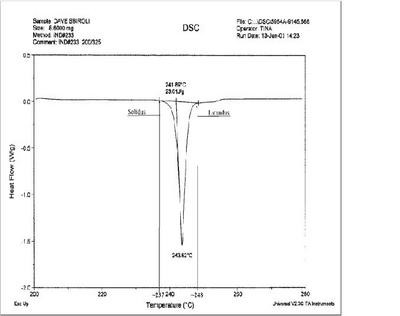As previously posted, Indiums Table of Specialty Alloys҂and solderscontains hundreds of solder alloys and for each of them, we have listed melting temperatures. The method by which these were calculated is a repeatable one using a piece of equipment called a Differential Scanning Calorimeter.
In this method, a small sample of the solder alloy is input into the system and slowly heated until the solder alloy melts. Throughout the reading, a graph is created, from which the solidus and liquidus temperatures are interpreted.
The graph appears as a steady baseline, and at the melting point of the solder alloy, a peak is generated (See Image). At the point where the peak first deviates from the baseline, the solder alloy has begun to melt and this is the solidus point. At the point where the deviation returns to the baseline, the solder alloy is completely molten and this is theliquidus point. The entire deviation period is defined as a phase change period.
The tolerance of the scan is related to the scan rate. The slower the scan, the more accurate the reading. The tolerance on a typical reading is +/- 3:C.
If you have a question about the melting temperature of any of our solder alloys or a solder alloy you are purchasing from us, we will be happy to share the differential scanning calorimeter readings with you for your personal interpretation.


